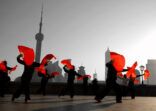The inclusion of ETFs in the upcoming market linkage has sparked enthusiasm among providers, led by global ETF powerhouse Vanguard.
“The move will further facilitate international access to the Chinese equities and benefit China’s vast pool of investors by offering them a broader line-up of stocks and investment products available on HKEx,” the firm said in a statement.
Although the Shenzhen-Hong Kong Connect has been approved, no date has been set for the actual start of trading, but speculation is that it will happen this year.
In any case, ETF products are likely to be included for cross-border trading at a later stage next year due to more complex operational issues, Hong Kong Exchanges and Clearing CEO Charles Li said last week.
It is still uncertain what kind of ETF products are eligible under the new program because ETFs are also allowed under the Mutual Recognition of Funds scheme, Choy told FSA. Regulators, however, have so far only approved mutual funds for sale under the MRF.
Choi said questions surrounding the domicile requirements for the product or manager, the specific exposure of the ETF and whether leveraged and inverse products are allowed remain unanswered.
Onshore ETFs
Commenting on the onshore ETF market, he noted “most mainland ETFs track domestic indices with a broad range of themes. Mainland investors in general are more interested in money market funds or broad market ETFs as home bias still exists”.
According to data from Morningstar China, among the 145 ETFs listed on the mainland bourses, only eight invest in offshore markets using the Qualified Domestic Institutional Investor (QDII) scheme, or Shanghai-Hong Kong Stock Connect, both which allow onshore money to invest overseas under a designated quota.
Of the eight invested offshore, four of them invest in Hong Kong-listed stocks, including H-shares; two track the Nasdaq 100, one tracks the S&P 500 and the other follows Germany’s benchmark index the DAX 30.
Among the 10 mainland-listed ETFs with the highest average daily turnover as of August 19, the top four are all money market ETFs (ranging from RMB 1.1bn to RMB8.1bn). Three are equities focused, tracking ChiNext, CSI 300 and Shanghai Composite 50, and one is linked to the gold price.
“The introduction of Hong Kong-listed ETFs to the onshore market will hopefully broaden the product range, especially on the fixed income side and offshore exposure.”
“It might also help lower the overall fee level. Currently onshore ETFs cost on average 50bp a year, versus 10bp in the SAR,” he added.
That could also apply to the China-focused ETFs in Hong Kong. “Having a more diverse opportunity set for accessing A-shares could intensify competition and may ultimately serve to reduce trading costs as well as management fees for A-Share ETFs,” he said in a note.
Comparatively, Hong Kong has 145 ETFs (excluding RMB share class), plus six leveraged and inverse products. Average daily ETF turnover hit HK$3.4bn ($438m) in July.
















